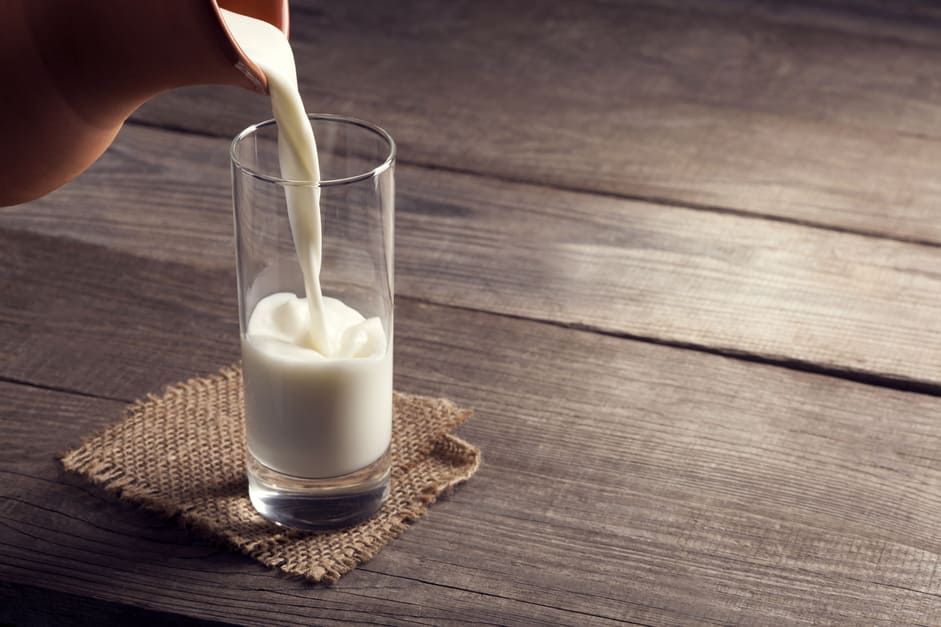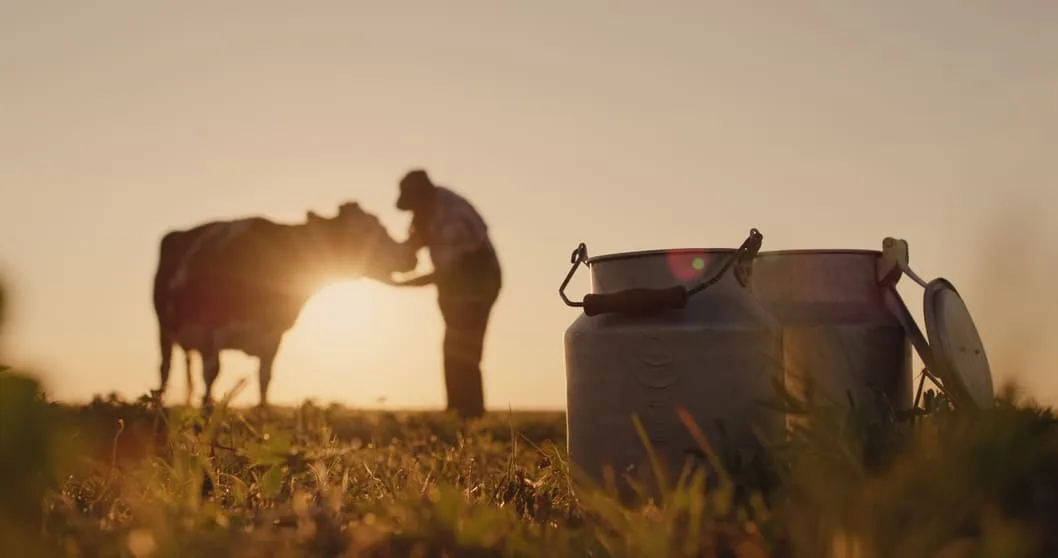Do we need to drink milk? Should we drink milk? These questions may have seemed quite foolish centuries or decades ago, nonetheless, they are frequently asked in current days. On a simple internet search on “should we drink milk?” we get 992 000 000 replies… So where should we stand?
Obviously that the answer goes well beyond a simple yes or no reply. In this article we will focus on the nutritional, environmental, social and economical milk benefits that lead us to believe that yes, we should drink milk.

Understanding milk benefits in today’s world
Feeding a growing worldwide population and achieving global nutrition and food security is a great challenge per se, that becomes even more challenging if we account for the current degree of undernutrition, overnutrition, and inequitable food distribution present in many parts of the world1. Dairy production is a major global societal asset due to its economic and nutritional benefits. Milk represents about 8% of all food that is produced in the world2.
Nutrient-rich foods, like milk, are one of the solutions in ensuring that the global population is well nourished.
The socio-economical perspective
In 2019 alone global milk production accounted for 851.8 million tons, meaning an average individual milk consumption of about 111.4kg of milk per person.
According to the FAO outlook3, world milk production (roughly 81% cow milk, 15% buffalo milk, and 4% from goat, sheep and camel milk combined) is projected to grow at 1.7% from 2021 to 2030 (faster than most other main agricultural commodities.
In almost all regions of the world, increase in yield is expected to be the greatest contributor to production rather than herd growth. The drivers of yield increase include the optimisation of milk production systems, improved animal health and welfare, higher efficiencies in feeding, and better genetics.
Dairy production also provides many non-marketed economic benefits, specially in low income countries and/or in family farms. These milk benefits include for example manure for use on-farm as fuel or organic fertilizer (in several farming systems manure is the sole source of nutrients for crop production). In developing countries, dairy animals are considered as safeguarding savings for sale in times of need (e.g., injury or disease of a household member), and a form of capital investment4.

The environmental focus
Sustainable production policies or manifested consumer concerns will affect the dairy sector. Dairy production accounts for a share of overall greenhouse gas (GHG) emissions (depending on the country, production systems, etc.), resulting in discussions on how adjustments to dairy production could contribute to reducing such emissions (see “Sustainability goals for dairy farming”). Many approaches are being considered with different implications, but all with the focus on mitigation GHG and negative externalities of dairy production. The planned or already implemented regulations to address these issues will have an effect on dairy farming. On the other hand, these pressures are leading to innovative solutions improving long-term sustainability of the dairy sector5.
It is important to highlight that the dairy industry provides a major benefit to the world through upcycling human inedible feedstuffs into milk and associated dairy products. This is a usually forgotten topic when the environmental issue is addressed. If, instead of accounting only for GHG emission/kg of product, we do the math /mg of nutrient, results are substantially different.
The nutritional facts

Mammalian milks (mostly cow milk) are consumed throughout the lifespan of a person and in all parts of the world. Milk and other dairy food products produced from further processing of milk are thus a large contributor to human nutrition.
Bovine milk and dairy products represent a very good source of proteins (in particular amino-acids), lipids, vitamins and minerals. Milk is the main contributing food item for calcium (49% of global nutrient availability), Vitamin B2 (24%), lysine (18%), and dietary fat (15%), and contributes more than 10% of global nutrient availability for a further five indispensable amino acids, vitamins A, B5, and B12, phosphorous, and potassium6. The health benefits of milk have been well established. The totality of available scientific evidence supports that intake of milk and dairy products contribute to meet nutrient recommendations, and may protect against the most prevalent chronic diseases, whereas very few adverse effects have been reported7.
There are no alternatives to milk that provide the same amount of nutrients with the same bioavailability8.
Milk is a natural “superfood”!
Key take aways
So, should we drink milk? What are the milk benefits?
Extensive literature reviews are clear: the benefits of drinking milk make it an important part of a healthy eating plan. Milk has an important role for achieving adequate nutrient intake in a healthy and lower GHG emission dietary pattern.
Milk:
- generates on- and off-farm employment;
- improves the use of resources;
- is a healthy and nutritious food;
So yes! We should indeed drink milk!
Consulted references
1. Sustainable Nutrition Initiative. https://sustainablenutritioninitiative.com/animations/
2. Outlook, F. (2020). Biannual Report on Global Food Markets [Electronic Resource]. Food and Agriculture Organization of the United Nations.
3. FAO, IFAD, UNICEF, WFP, and WHO. The State of Food Security and Nutrition in the World 2020. Transforming Food Systems for Affordable Healthy Diets. Rome: FAO (2020).
4. FAO, GDP and IFCN. 2018. Dairy Development’s Impact on Poverty Reduction. Chicago, Illinois, USA. Licence: CC BY-NC-SA 3.0 IGO
5. Peterson CB and Mitloehner FM (2021) Sustainability of the Dairy Industry: Emissions and Mitigation Opportunities. Front. Anim. Sci. 2:760310. https://www.doi.org/10.3389/fanim.2021.760310
6. Smith NW, Fletcher AJ, Hill JP and McNabb WC (2022) Modeling the Contribution of Milk to Global Nutrition. Front. Nutr. 8:716100. https://www.doi.org/10.3389/fnut.2021.716100
7. Tanja Kongerslev Thorning, Anne Raben, Tine Tholstrup, Sabita S. Soedamah-Muthu, Ian Givens & Arne Astrup (2016) Milk and dairy products: good or bad for human health? An assessment of the totality of scientific evidence, Food & Nutrition Research, 60:1, https://www.doi.org/10.3402/fnr.v60.32527
8. Smith NW, Dave AC, Hill JP and McNabb WC (2022) Nutritional assessment of plant-based beverages in comparison to bovine milk. Front. Nutr. 9:957486. https://www.doi.org/10.3389/fnut.2022.957486
About the author
Ana Sofia Santos (Head of Research and Innovation at FeedInov CoLAB)
Ana Sofia Santos holds a MSc in Animal Production and a PhD in Animal Science, both on the Nutrition area. She is currently Head of research and Innovation at FeedInov CoLAB, an interface structure between the academia and the animal feed industry, promoting innovative approaches to animal feeding. Her current area of research interest resides on animal production systems and the integration of livestock and plant production systems within a holistic vision of circularity in food production.
Explore author’s articles


Leave your comments here